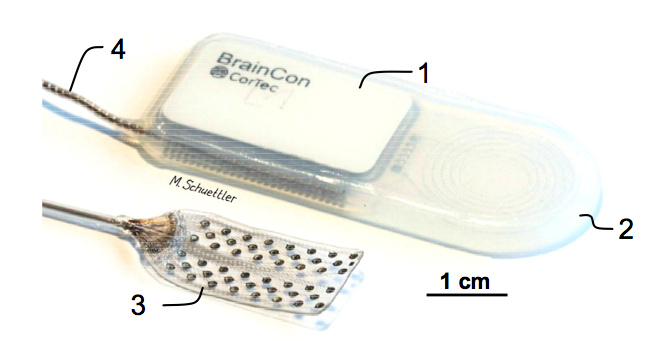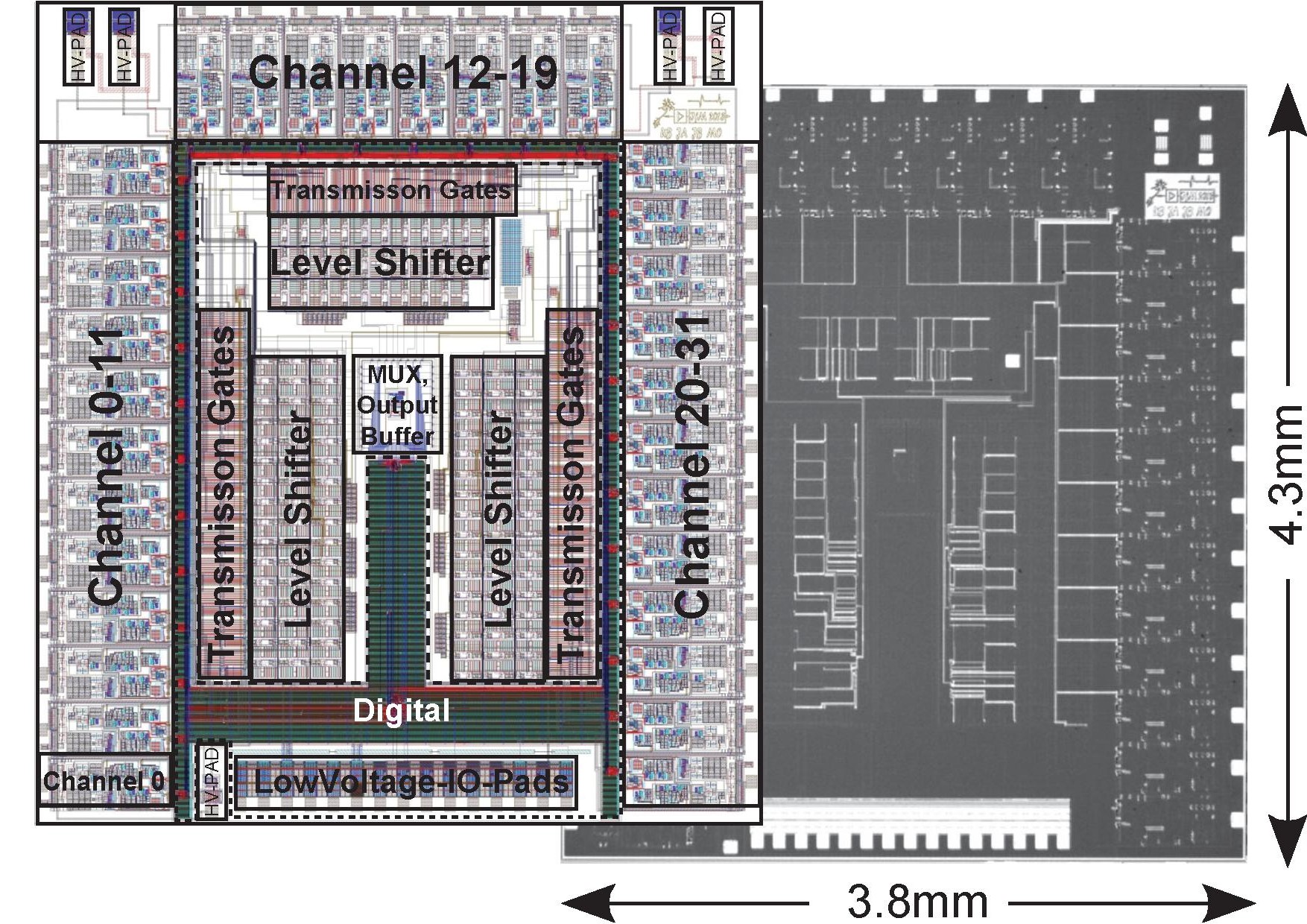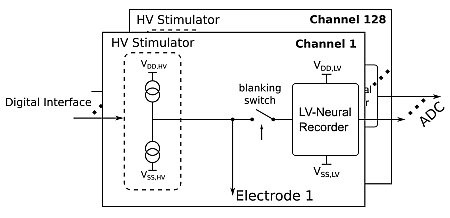CMOS Circuits for Multi-Channel, Bidirectional Neural Interfaces
Bidirectional, neural interfaces are a tool which is widely used in the study of the complex interconnections between neurons within the brain. To understand the activity of neural cells, nervous tissue is first stimulated with a current or voltage signal and afterwards its electrical activity is observed. This response is usually in the range from 50µV up to 1mV, which is much lower than the stimulation signal that can easily exceed a voltage range of 10V or more. The big difference in these amplitude levels make the design of the analog front-end challenging, as low noise and low power recording circuits must be combined with a high voltage stimulator.


Another big challenge in the design of neuromodulators is the demand for higher spatial resolution, which requires not only one, but as many as possible recording and stimulation channels on a single chip. A higher spatial resolution allows on the one hand side a more detailed look into the brains functionality, on the other hand side neurons can be triggered more accurate enabling more effective treatments. But increasing the channel count directly increases not only the area but also the power consumption of the system, which are both strictly limited by the requirements for an implantable system.
These requirements lead to the approach of integrating as many components as possible of a neuromodulator on one chip. A higher level of integration makes it possible to increase the channel number, while keeping the size and power consumption of an implant within acceptable ranges. In current researches the number of recording channels has increased up to 256, while signal quality and system power has continuously become better.
A first chip with 32 recording channels and a HV transistor acting as a blanking switch is shown above. It has been successfully implemented and published at ESSCIRC 2014.

The aim of this project is to design a bidirectional, multi-channel circuit which is able to stimulate the nervous tissue at multiple sights and record its response at the same location. A possible implementation of such a system is shown in the block-level drawing below.

Projektleiter
Projektmitglieder
M.Sc. S. Reich
M.Sc. M. Sporer
